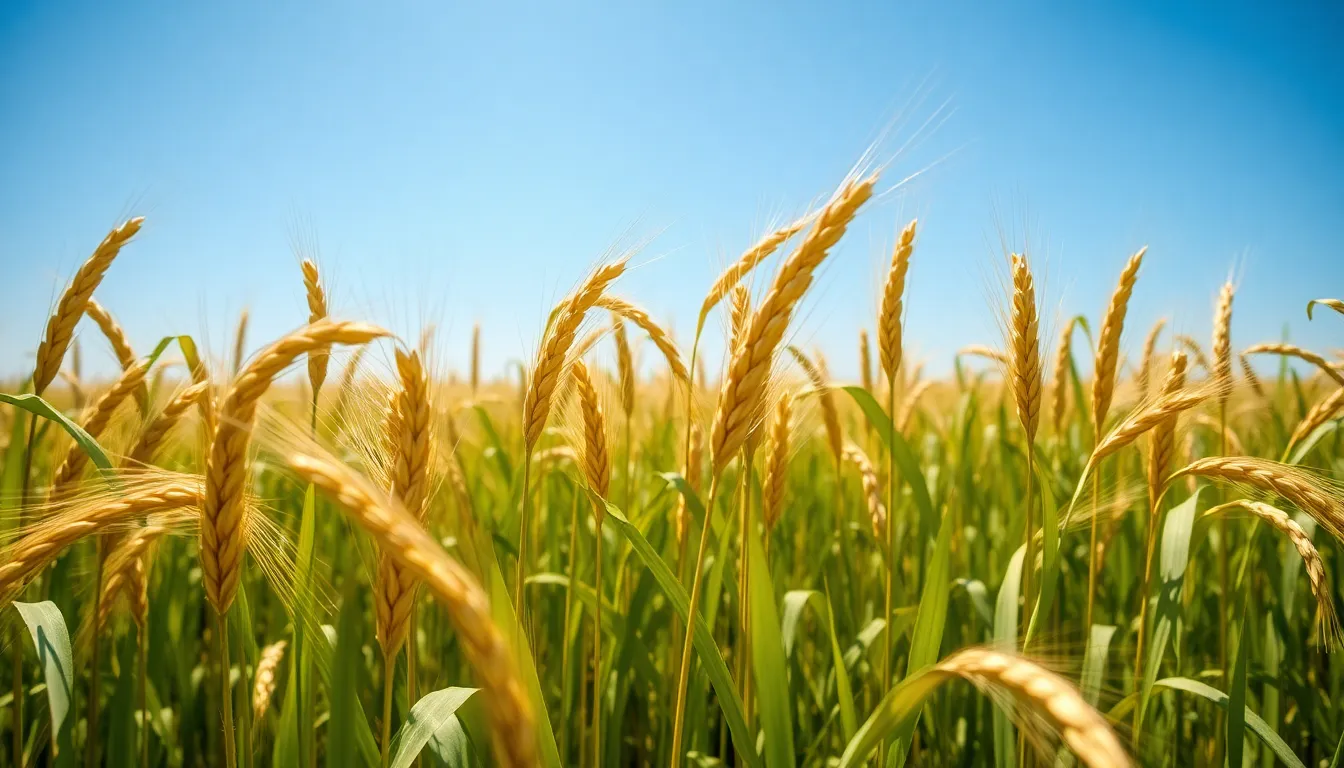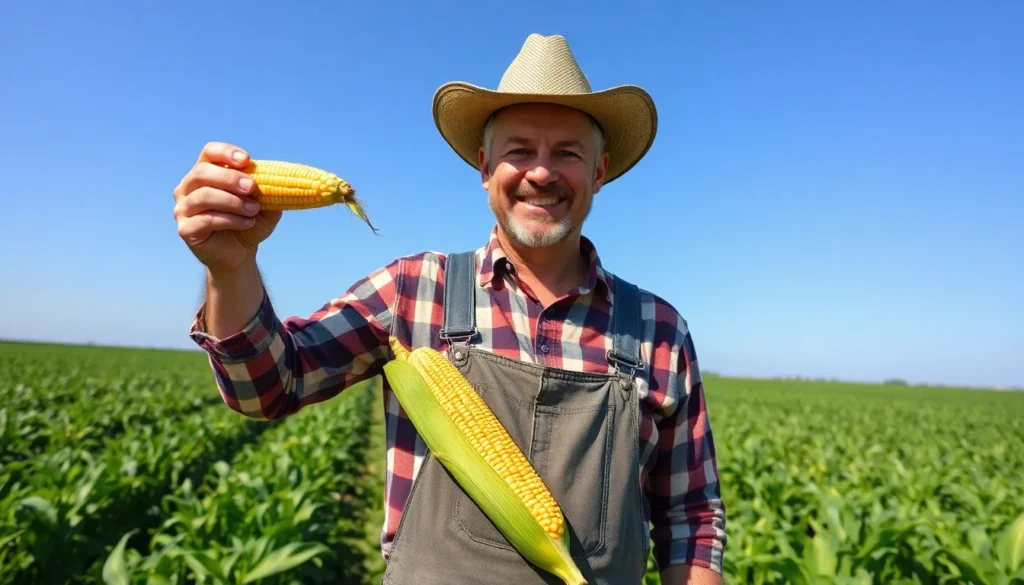Table of Contents
ToggleIn a world where food security and sustainability are more crucial than ever, understanding the state of global agriculture is essential. The latest global agriculture report sheds light on the challenges and innovations shaping farming practices across continents. From climate change impacts to technological advancements, this report offers invaluable insights into how agriculture is evolving to meet the needs of a growing population.
As countries navigate the complexities of supply chains and environmental concerns, the report highlights key trends and statistics that reveal the resilience and adaptability of the agricultural sector. With a focus on sustainability and efficiency, it explores how farmers are striving to balance productivity with ecological responsibility. This comprehensive overview not only informs policymakers and industry leaders but also engages consumers in the conversation about the future of food.
Overview of Global Agriculture Report
The Global Agriculture Report provides essential insights into the current state and future direction of agricultural practices worldwide. This report outlines key findings related to food security, sustainability, and the agricultural sector’s response to pressing challenges.
The report identifies several critical issues facing agriculture, including climate change impacts, resource scarcity, and increasing demand for food. It highlights that global temperatures are rising, which affects crop yields and livestock health. In response, farmers are adopting innovative practices such as crop rotation and precision agriculture to enhance productivity while maintaining ecological integrity.
Technological advancements play a significant role in advancing agricultural efficiency. The report notes that technologies like drones, sensors, and machine learning optimize resource usage and improve yield forecasts. These advancements contribute to reducing waste and increasing food production in an environmentally conscious manner.
Supply chain complexities also emerge as a central theme. The report details how disruptions, such as pandemics and geopolitical tensions, can impact food distribution. It emphasizes the importance of resilient supply chains to ensure consistent food availability, particularly in developing regions.
Overall, the Global Agriculture Report serves as a critical resource for understanding the agricultural landscape’s evolving nature and provides actionable insights for policymakers, industry leaders, and consumers to navigate future challenges.
Key Findings

The global agriculture report reveals significant insights about crop production trends and livestock statistics, essential for understanding current agricultural dynamics.
Crop Production Trends
Global crop production has faced diverse challenges, yet it remains resilient. In 2022, wheat production reached 775 million metric tons, reflecting a 10% increase from the previous year. Maize production also showed growth, totaling 1.1 billion metric tons, with countries like the United States and China leading in yields. However, regions affected by extreme weather events experienced declines, notably in Southeast Asia and Sub-Saharan Africa. Innovations in farming practices, such as the adoption of drought-resistant crop varieties and smart irrigation techniques, have emerged to mitigate these challenges. Additionally, the report highlights the growing emphasis on sustainable practices, with organic farming area increasing to 72.3 million hectares globally.
Livestock Statistics
Livestock production contributes significantly to global food security, with the sector producing 340 million metric tons of meat in 2022. Poultry and pork account for most of this output, with China and the United States as leading producers. The global dairy sector also thrives, generating over 900 million metric tons of milk annually. However, livestock farming faces mounting pressures from climate change and resource constraints. The report indicates a shift towards more sustainable practices, including integrated pest management and improved feed efficiency, aiming to lower greenhouse gas emissions. With global meat demand projected to increase by 15% by 2030, these trends highlight the need for sustainable transformation within livestock production systems.
Challenges in Global Agriculture
Global agriculture faces numerous challenges threatening food security and sustainability. Two significant factors contributing to these challenges are climate change and socio-economic conditions.
Climate Change Impact
Climate change significantly affects agricultural productivity and food supply. Rising global temperatures result in altered weather patterns, leading to increased occurrences of droughts, floods, and extreme weather events. For instance, regions like Southeast Asia and Sub-Saharan Africa report reduced crop yields due to climate-related disruptions. Crop production must adapt with innovations such as drought-resistant varieties and precision agriculture techniques, which optimize resource use and improve resilience. Furthermore, livestock health declines as heat stress increases, prompting the advancement of improved husbandry practices that focus on mitigating these effects. According to the report, adapting to climate change is no longer optional; it becomes essential for agricultural sustainability.
Socio-Economic Factors
Socio-economic factors profoundly influence the agricultural sector’s sustainability and resilience. Population growth contributes to rising food demand, which places additional pressure on farming systems. In 2022, global meat demand increased by 15%, requiring significant shifts in production practices. Economic disparities affect farmers’ access to technology and resources, hindering the adoption of sustainable practices. Access to financing and education remains limited in developing regions, preventing effective adaptation to new agricultural methodologies. Additionally, market fluctuations pose risks as global supply chains face increasing complexities. To combat these issues, policies must prioritize support for farmers, enabling them to implement innovative solutions that align food production with ecological balance.
Innovations and Solutions
Innovations and solutions in global agriculture focus on enhancing sustainability and leveraging technology to meet the demands of a growing population. The following subheadings detail key advancements in sustainable practices and technological developments.
Sustainable Practices
Sustainable practices play a vital role in mitigating the impacts of climate change and resource scarcity. Farmers increasingly adopt methods such as:
- Crop Rotation: Diversifies crop production, enhances soil health, and reduces pest infestations.
- Cover Cropping: Planting cover crops during off-seasons improves soil fertility and prevents erosion.
- Agroforestry: Integrating trees and shrubs within farming systems boosts biodiversity and carbon sequestration.
- Organic Farming: The area dedicated to organic farming reached 72.3 million hectares, promoting ecological balance and reducing chemical dependency.
These methods contribute to ecological sustainability, ensuring agricultural productivity without compromising the environment.
Technological Advancements
Technological advancements significantly enhance agricultural efficiency and resource management. Key innovations include:
- Drones: Utilized for crop monitoring, enabling farmers to assess field health and make informed decisions.
- Sensors: Collect real-time data on soil moisture and nutrient levels, guiding precise irrigation and fertilization.
- Machine Learning: Analyzes large datasets to provide yield forecasts and optimize resource allocation.
- Smart Irrigation Systems: Automate irrigation practices, reducing water usage while maintaining crop health.
These technologies enable farmers to improve yields and reduce waste, contributing to a more resilient agricultural sector.
Regional Highlights
The global agriculture report presents region-specific insights, revealing the diverse challenges and opportunities across agricultural sectors worldwide.
Agriculture in North America
North America, particularly the United States and Canada, remains a leader in agricultural production. In 2022, the U.S. produced approximately 430 million metric tons of corn and 48 million metric tons of soybeans. Advanced farming techniques, including precision agriculture and biotechnology, optimize yields while enhancing environmental sustainability. However, drought in the West and fluctuating trade policies pose significant risks. Farmers are increasingly investing in water-efficient practices and sustainable crop rotations to improve resilience against climate variability.
Agriculture in Asia
Asia dominates global agricultural output, contributing significantly to crop and livestock production. In 2022, China’s wheat yield reached 135 million metric tons, leading the world, while India’s rice production stood at 178 million metric tons. The region faces unique challenges, including high population density and extreme weather events. Innovations such as integrated pest management and smart irrigation are being adopted to enhance productivity. Despite these advancements, socio-economic factors and limited access to technology hinder widespread adoption of sustainable practices, necessitating supportive government policies for long-term sustainability.
The insights from the global agriculture report underscore the critical importance of innovation and sustainability in addressing the challenges faced by the agricultural sector. As climate change and resource scarcity intensify, adopting advanced technologies and sustainable practices becomes essential for ensuring food security.
Farmers worldwide are demonstrating resilience by embracing new methods that balance productivity with ecological responsibility. Policymakers and industry leaders must support these efforts to create a robust agricultural system that can adapt to future demands.
By prioritizing sustainability and leveraging technological advancements, the global agriculture sector can navigate the complexities of modern food production, ultimately fostering a more secure and sustainable future for all.




